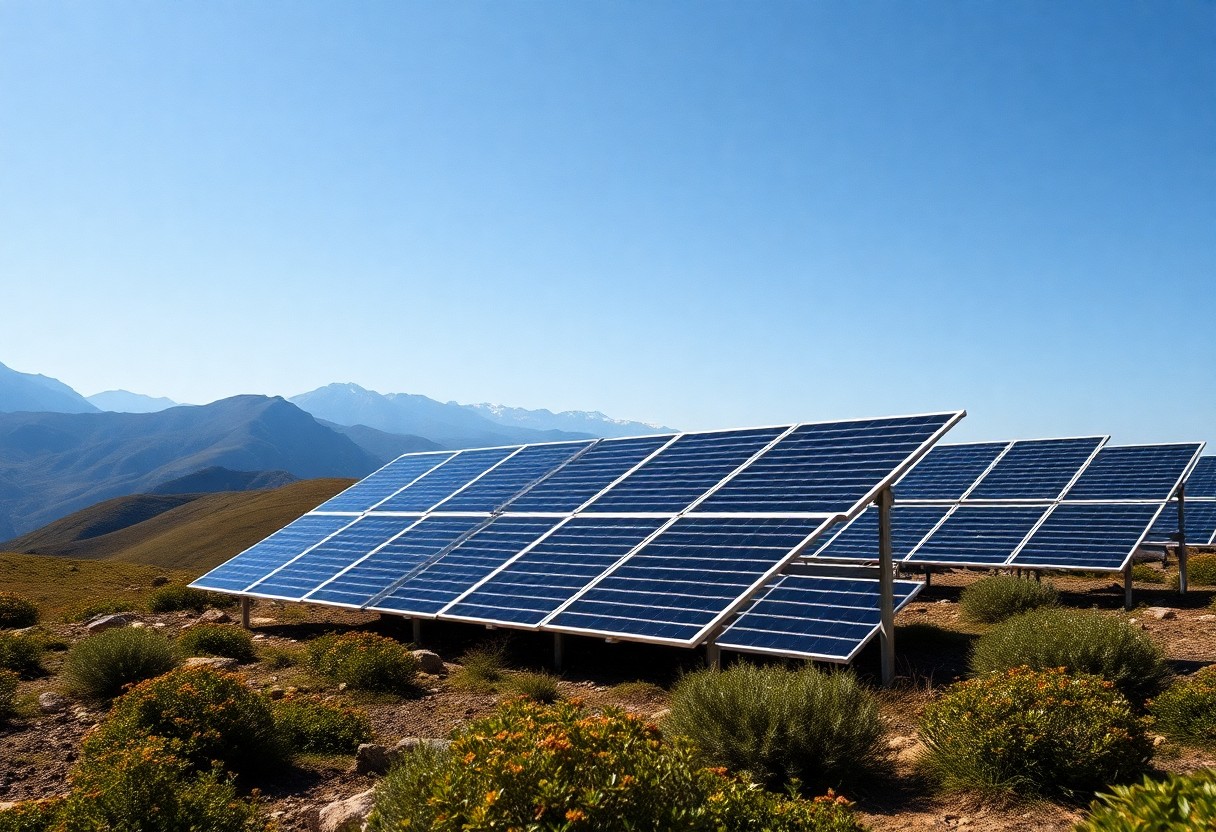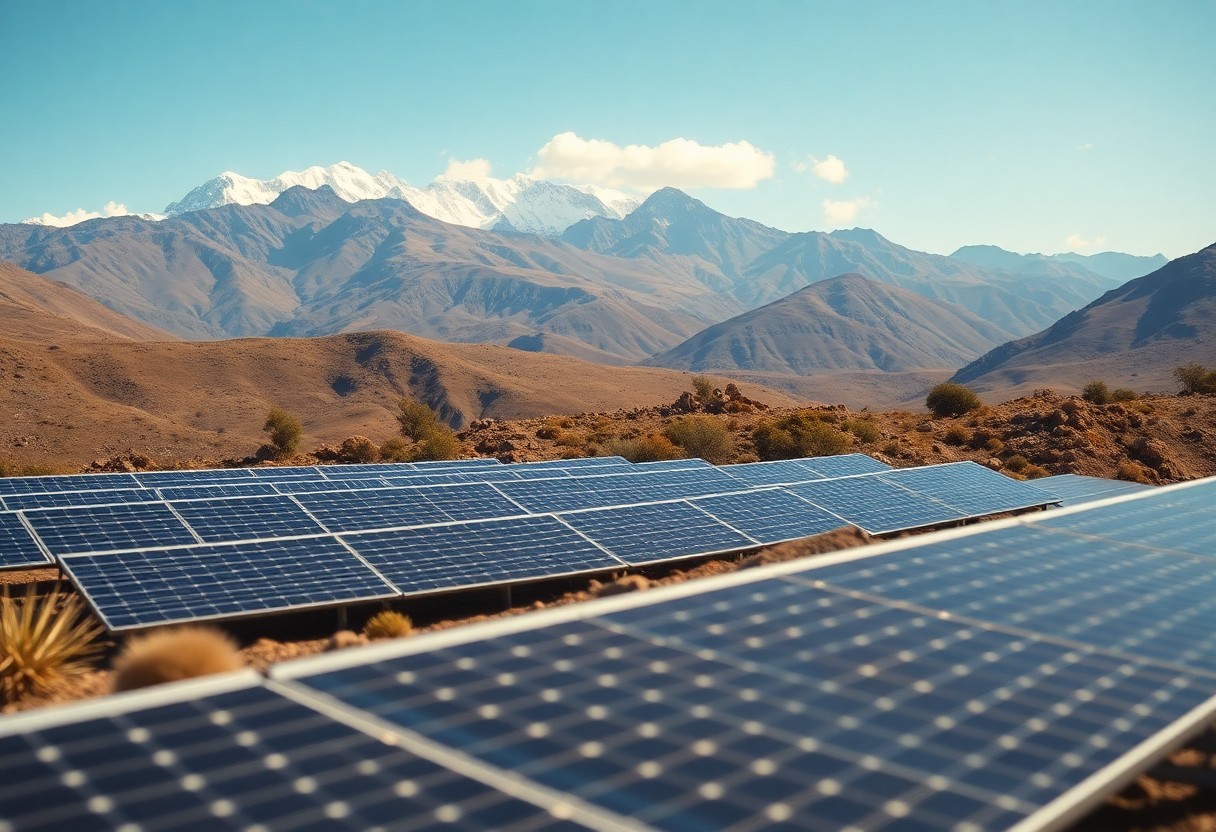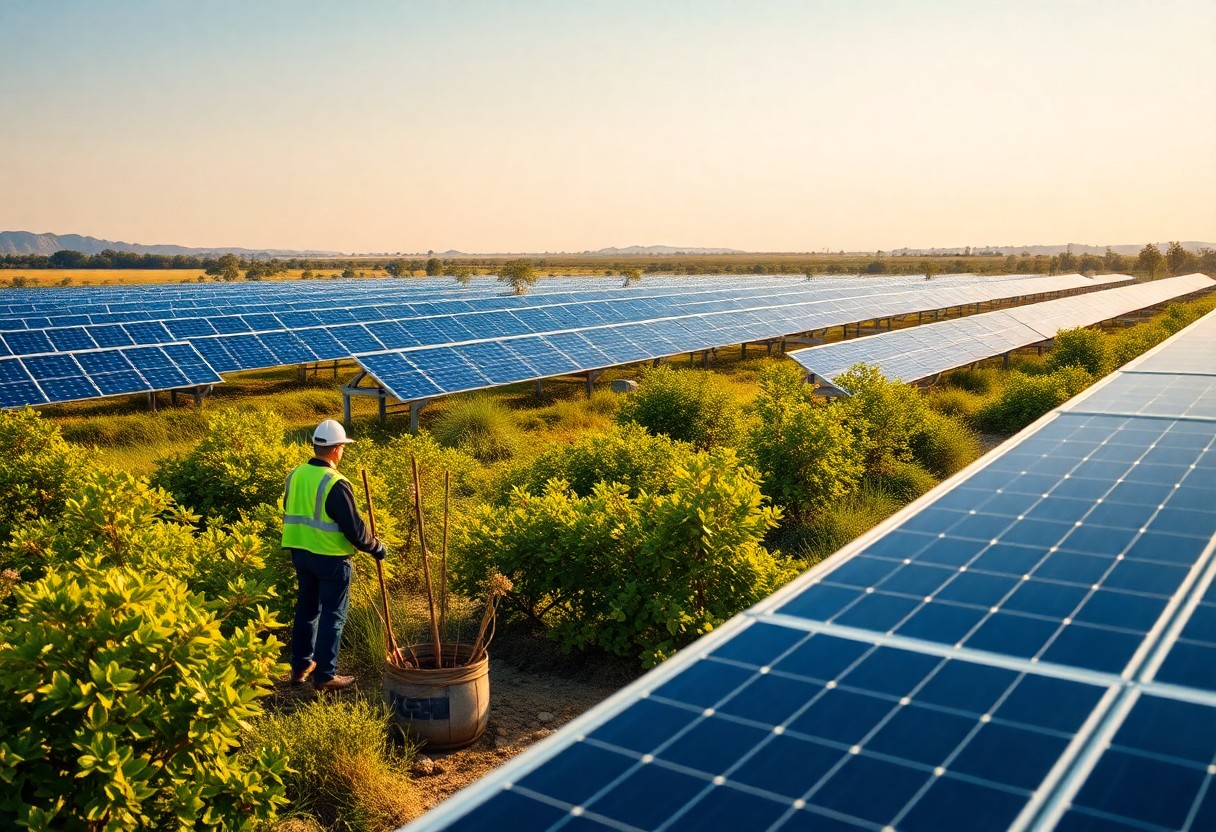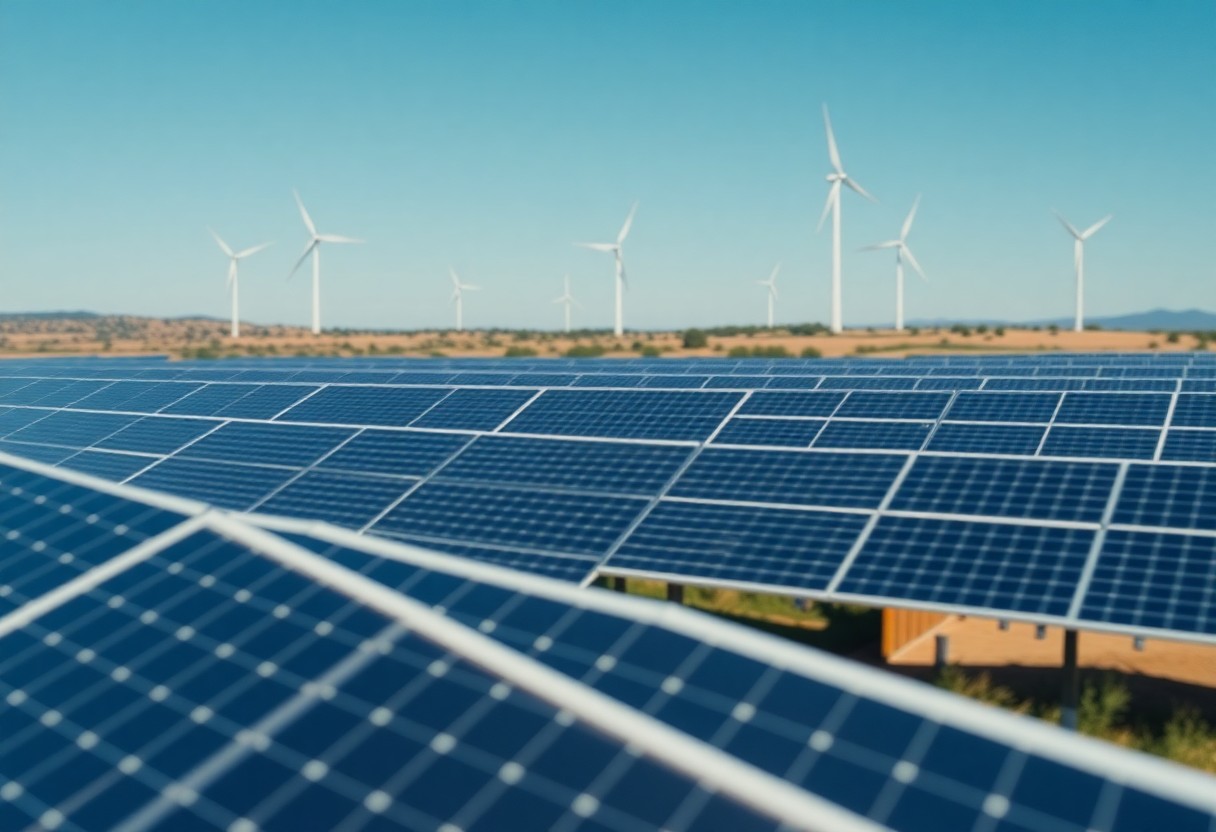There’s a growing concern about energy access in Peru’s Andean Highlands, where traditional power sources often fall short. You may wonder if solar power could provide a sustainable, clean alternative to meet the energy needs of remote communities. With the region’s abundant sunshine, implementing solar technology could not only enhance your energy security but also reduce environmental impact. This blog post will explore the potential benefits and challenges of harnessing solar energy in these high-altitude areas, providing insight into a solution that could significantly improve lives.

Key Takeaways:
- Solar power presents a renewable energy solution for the Andean Highlands, addressing energy shortages and providing access to electricity for remote communities.
- Utilizing solar technology can help mitigate the environmental impact of traditional energy sources, contributing to sustainable development in the region.
- The implementation of solar projects could stimulate economic growth by creating job opportunities and promoting local energy independence.
Overview of Solar Power
A solar power system harnesses energy from the sun, transforming it into electricity through photovoltaic cells or solar thermal systems. This sustainable energy source has become increasingly popular due to its potential to reduce dependence on fossil fuels, combat climate change, and decrease energy costs. With ample sunlight throughout the year, especially in regions like Peru’s Andean Highlands, solar energy represents an exciting avenue for energy innovation and accessibility.
Benefits of Solar Energy
Among the myriad advantages of solar energy, its ability to provide clean, renewable electricity stands out. Solar power systems produce minimal greenhouse gas emissions, contributing to a healthier environment. Additionally, you can gain energy independence by reducing reliance on imported fuels and taking advantage of decreasing installation costs which make solar power more accessible for communities in remote areas.
Solar Technology and Innovations
Any advancements in solar technology have revolutionized energy generation, making it more efficient and cost-effective. These innovations include improved photovoltaic materials, energy storage systems, and even solar power applications in agriculture and architecture.
Hence, innovation in solar energy technology is advancing rapidly, making solar systems more efficient and affordable for you. Innovations such as perovskite solar cells and concentrated solar power systems allow you to maximize energy output while minimizing land use. Additionally, energy storage technologies, like lithium-ion batteries, enable you to store energy for use during cloudy days or at night. With these developments, you can confidently embrace solar energy as a viable and sustainable option for your energy needs.
The Andean Highlands: Challenges and Opportunities
There’s a unique blend of opportunities and challenges in the Andean Highlands, particularly when it comes to energy access. You will encounter a landscape that is both majestic and demanding, creating disparities in energy availability for local populations. Understanding these dynamics can help you grasp how solar power could potentially bridge the energy gap in this region.
Geographic and Climatic Conditions
Any evaluation of the Andean Highlands must consider its complex geographic and climatic conditions. The high altitude and rugged terrain result in limited access to conventional energy infrastructure, while the region receives abundant sunlight, offering an ideal setting for solar technology implementation.
Socioeconomic Factors Affecting Energy Access
Along with geographic challenges, socioeconomic factors deeply influence energy access in the Andean Highlands. High rates of poverty and limited infrastructure hinder many communities from utilizing available resources. Key factors include:
- Poverty levels limit investment in sustainable energy solutions.
- Education and awareness about energy options are often inadequate.
- Government policies may not prioritize energy needs for rural populations.
Recognizing these socioeconomic conditions is vital for developing effective energy strategies in the region.
Challenges in the Andean Highlands extend beyond mere geographic obstacles. You will find various socioeconomic factors affecting energy access that need addressing for sustainable solutions. Issues such as:
- Limited access to education result in reduced awareness of renewable energy benefits.
- Inconsistent government support complicates efforts to implement reliable energy sources.
- Economic constraints inhibit investments in renewable technologies.
Recognizing these challenges will be vital in fostering energy solutions that empower local communities.
Case Studies in Solar Implementation
Keep in mind the following significant case studies showcasing the potential of solar energy in Peru’s Andean Highlands:
- Ministry of Energy and Mines: Deployed over 800 solar home systems to isolated communities.
- Solar Homes Project: Benefited 150,000 people with access to electricity, improving quality of life.
- INTI Project: Installed 500kW of solar panels in rural Cusco, reducing dependency on fossil fuels.
- Andean Solar Initiative: Provided 40 villages in Arequipa with renewable power, enhancing local economies.
Successful Solar Projects in Peru
Peru has seen remarkable success with solar power projects, bringing electricity to remote communities in the Andes. Notably, over 1,200 solar systems have been installed since 2016, providing energy to many families previously reliant on kerosene lamps. These initiatives have not only enhanced everyday activities like studying at night but also fostered local businesses through sustainable energy access.
Lessons Learned from Other Regions
Above all, understanding how other regions have implemented solar energy is crucial for Peru’s future. Nations like India and South Africa have effectively utilized innovative financing models and community engagement strategies, resulting in over 2 million households gaining access to solar power.
Considering the experience from these countries, you can see that leveraging public-private partnerships, investing in community training, and addressing regulatory challenges have proven to be effective. Furthermore, it’s vital to ensure that local needs are prioritized and that the technology is adaptable to various environmental conditions. By integrating these lessons, Peru can pave the way for a more sustainable and prosperous future in the Andean Highlands.
Policy and Regulatory Framework
To effectively harness solar power in Peru’s Andean Highlands, a robust policy and regulatory framework is necessary. You need to understand the interplay between government regulations, financial incentives, and community involvement that drive renewable energy projects. A supportive legislative environment can facilitate investments, promote local ownership, and maximize the benefits of solar energy for sustainable development in this region.
Government Initiatives for Renewable Energy
After years of commitment to renewable energy, the Peruvian government has launched multiple initiatives aimed at increasing solar capacity. You should be aware of programs that provide financial incentives, such as tax breaks and subsidies, to attract private investment in solar projects. These initiatives not only aim to increase energy access in rural areas but also focus on reducing greenhouse gas emissions and promoting sustainable development.
Challenges in Policy Implementation
An array of challenges often hinders effective policy implementation in the renewable energy sector. You may encounter issues such as bureaucratic inefficiencies, lack of infrastructure, and limited financial resources that can stall solar projects. Addressing these challenges is necessary to ensure that solar power can be a viable energy solution for communities in the Andean Highlands.
Indeed, the challenges in policy implementation can pose significant risks to the advancement of solar power. Bureaucratic inefficiencies may lead to delays in project approvals, causing frustration among investors and communities alike. Additionally, the lack of necessary infrastructure can prevent the efficient distribution of solar energy, diminishing its impact. To make matters worse, limited financial resources can hinder the capacity of local governments to support and maintain solar initiatives. Addressing these issues will require concerted efforts to streamline processes, invest in necessary infrastructure, and mobilize funding options for sustainable energy projects.
Community Engagement and Education
Not only is community engagement vital in promoting solar power in Peru’s Andean Highlands, but it also fosters a sense of ownership among local populations. By actively involving residents in planning and decision-making, you ensure that solar initiatives reflect the community’s needs and encourage long-term sustainability. Empowering communities through education creates advocates for renewable energy, ultimately helping to shape a greener future.
Involving Local Populations
Above all, local populations hold the key to the successful adoption of solar energy solutions. By engaging you in the process, such as through participatory workshops, your insights and concerns can guide the development of infrastructure that truly meets your community’s needs.
Importance of Awareness and Training
Behind any successful solar initiative lies the need for awareness and training, ensuring you understand the benefits and operation of solar technology. This involves providing you with not just the knowledge of how to harness solar energy, but also training you on its maintenance and potential cost savings.
Even basic training can make a significant difference in how well solar systems perform in your community. Knowledge about solar technology allows you to leverage its full potential and helps dispel any misconceptions about renewable energy. Moreover, training programs can foster local expertise, ensuring that you are equipped to troubleshoot and maintain systems, which leads to greater resilience in energy access. Ultimately, informed communities embrace solar power, enhancing both local economies and environmental stewardship.
Future Prospects for Solar Energy in the Andean Highlands
Many experts believe that the untapped potential of solar power in the Andean Highlands could transform the region’s energy landscape. With abundant sunlight and increasing interest in renewable energy solutions, the future appears promising. By investing in solar energy, you can help reduce reliance on fossil fuels, protect the environment, and foster sustainable economic growth for the communities in these highlands.
Potential Growth Areas
One area of significant growth for solar energy in the Andean Highlands is the development of off-grid solar solutions. These systems can provide electricity to remote communities that lack access to the national grid, improving their quality of life and economic opportunities.
Role of International Collaboration
One crucial factor for advancing solar energy initiatives in the Andean Highlands is fostering international collaboration. You can benefit from shared expertise, resources, and innovative technologies, leading to more efficient and effective solar projects.
A strong international partnership can enhance your ability to access funding, technical know-how, and best practices. By working with global organizations and experts, you can overcome challenges such as financing, technology transfer, and regulatory frameworks. This collaboration can lead to the successful implementation of solar projects that not only address energy needs but also yield positive social and economic impacts. Ultimately, your engagement in these collaborative efforts could pave the way for a sustainable energy future in the Andean Highlands.
Final Words
Following this discussion, you can see that solar power presents a viable solution for the energy needs of Peru’s Andean Highlands. By harnessing the abundant sunlight available in the region, you can help empower local communities, enhance economic development, and promote sustainable practices. Investing in solar technology not only addresses energy access challenges but also supports environmental stewardship. As you consider the future of energy in these highlands, remember that solar power could be a transformative force for the region.
FAQ
Q: What are the potential benefits of solar power for the Andean Highlands in Peru?
A: Solar power has the potential to offer numerous benefits to the Andean Highlands of Peru. Firstly, it can provide a reliable source of electricity to remote communities that currently lack access to a stable power grid. This can significantly improve the quality of life by enabling better access to services such as education and healthcare. Secondly, solar power can help reduce reliance on fossil fuels, thereby decreasing greenhouse gas emissions and promoting environmental sustainability. Lastly, the region’s high altitude and abundant sunlight make it an ideal location for solar energy generation, thus contributing to local economic development through job creation in the renewable energy sector.
Q: How feasible is it to implement solar energy projects in the Andean Highlands?
A: Implementing solar energy projects in the Andean Highlands is generally considered feasible, given the region’s geographical advantages. The high altitude allows for consistent solar irradiance, making solar panels highly efficient. Additionally, advancements in solar technology and decreasing costs of solar installations have made it more accessible. However, challenges such as infrastructure limitations, initial investment costs, and the need for community engagement must be addressed. Collaboration with local governments, NGOs, and private sector partners can help to overcome these obstacles and ensure successful project implementation.
Q: What role can local communities play in promoting solar power in their regions?
A: Local communities can play a significant role in promoting and adopting solar power in their regions. By participating in educational programs about the benefits of solar energy, community members can become advocates for its implementation. Involving local populations in the planning and decision-making processes ensures that projects align with their needs and priorities. Additionally, communities can engage in training programs to develop the skills necessary for installation and maintenance of solar systems, fostering local job creation and economic growth. Empowering communities in these ways leads to stronger support for solar initiatives and sustainable energy practices.


